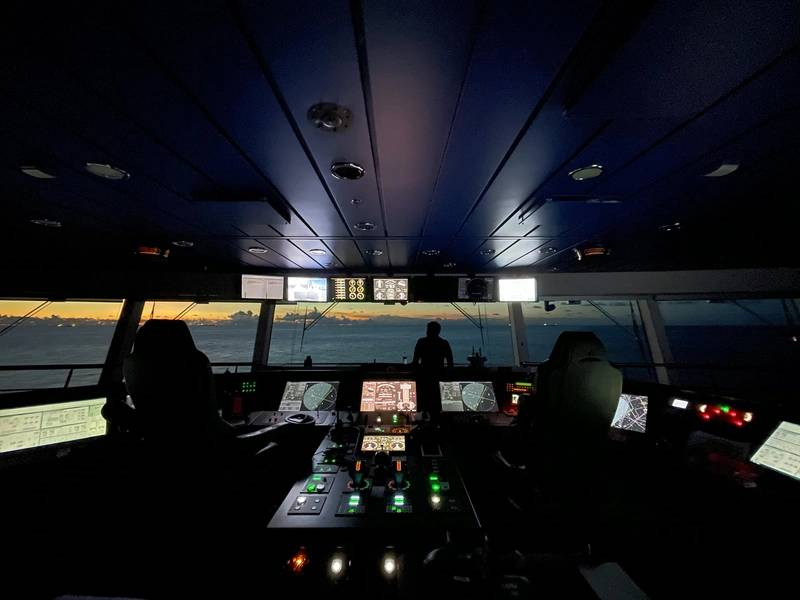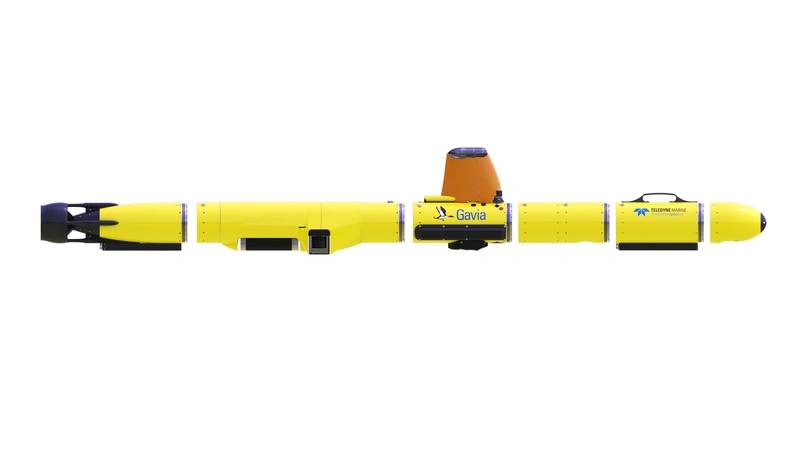How Digital Tech Aims to Make Commercial Vessels Safer, Cleaner, More Efficient
The maritime industry is witnessing a technological revolution that is fundamentally changing how ships operate, improving safe and efficient performance and reducing emissions, all to meet increasingly restrictive environmental standards. Adopting cutting-edge digital technologies enables ship owners and operators to optimize fleets, boost safe and efficient performance and reduce emissions while satisfying ever-developing environmentally beneficial requirements. Digitalization lies here and on the horizon of commercial vessel operations, the forward impetus of a new era characterized by enhanced, safe and efficient performance.
Predictive maintenance
One of the transformative and cutting-edge approaches in the digital revolution is the implementation of predictive maintenance systems. These systems – based on artificial intelligence (AI) – leverage sensor data from an onboard system to predict failures in equipment before they occur. With AI learning from hundreds of machine samples on average, it can analyze the trends of a particular metric over a specific time frame and then conclude the probability of a failure before it happens based on those samples. This approach reduces unplanned downtime and allows operations to avoid costly breakdowns. Not only does this save money, but it also makes a vessel safer by ensuring that vital systems don’t fail. These systems are facilitated by the Internet of Things (IoT), which uses sophisticated sensors to monitor fuel consumption, engine performance, hull conditions and more. This type of predictive maintenance allows operators to tackle growing problems before they become full-blown issues, improving efficiency and safety in day-to-day operations.
Data-driven fleet optimization
Data analytics is also reshaping the maritime sector. By collecting real-time data on vessels' performance, fuel efficiency and route optimization, operators can improve their fleet management and decision-making process. Data on fuel consumption and decision-making helps in route optimization, thereby saving both fuel and the impact of operations on the environment, which is critical as ships aim to bring down their movement-related greenhouse gas emissions. Examples include shipping companies already complying with two international regulations: the Carbon Intensity Indicator (CII) and the Energy Efficiency Existing Ship Index (EEXI). Additionally, a single point of contact through cloud-based platforms for data storage and analysis allows operators to maintain close control over entire fleets. Access to performance data from a central hub facilitates quicker, more informed onshore and onboard decision-making, boosting operational efficiency while simplifying regulatory compliance.
 Photo: Sergii / Pexels
Photo: Sergii / Pexels
Uncrewed Vessels & Remote Ops
Uncrewed vessels and remote operations have been and continue to be an integral part of the digital revolution in making commercial vessels safer, cleaner and more efficient. Interventions such as digital analysis and camera-based observations of ports are just the beginning. Autonomous ships and automated drone platforms serve a vital role and are constantly being refined with new advancements and innovations in technology. Multibeam echosounders mounted on board autonomous underwater vehicles (AUV) are at the forefront of digitization's impact on shipping and port security.
This includes using these solutions to precisely map ports and waterways for safe navigation in increasingly congested shipping areas. These systems are ever more critical in detecting and mapping hazards along shipping routes and in congested harbors. AUVs provide real-time surveillance capabilities, such as scanning for submerged threats, including unauthorized vessels or explosives, and provide high-resolution images of underwater infrastructure and bathymetric mapping data.
One of the companies leading the way in using underwater drones to support the digitalization of the shipping industry is Teledyne Marine. “We offer a full spectrum of sea and subsea technologies for maritime and shipping applications,” said Arnar Steingrimsson, vice president of sales, marine vehicles, Teledyne Marine. “An example is our series of Teledyne RESON SeaBat multibeam echosounders fitted on our Gavia AUV and Z boat USV [uncrewed surface vessel] systems. These provide accurate seafloor mapping with high-resolution data vital to improving port safety. Cost-effective, accurate, timely hydrographic data collection ensures greater navigational safety and threat detection for increasingly dynamic port security efforts.”
Teledyne Marine acquired ChartWorld, a supplier of digital navigation systems and ECDIS [Electronic Chart Display and Information System] solutions. “This will provide the shipping industry with enhanced capabilities for the operation and efficiency of their business and improved compliance with ever-changing regulatory requirements,” Steingrimsson said.
Sustainability via Digital Solutions
Digitalization plays a vital role in reducing the carbon footprint of shipping. Its primary contribution to sustainability lies in optimizing fuel consumption through real-time data on vessel speed, fuel usage and weather conditions. This approach helps minimize fuel consumption and emissions at any given moment.
Advanced emissions monitoring systems provide real-time feedback on greenhouse gas outputs during operations, enabling operators to adjust their routes to avoid exceeding regulatory limits. By leveraging digital solutions, shipowners and operators can effectively address global decarbonization goals. With new regulations in place requiring reduced shipping emissions, these digital tools allow operators to track emissions and enhance fuel efficiency.
Blockchain & Cybersecurity
Digital systems are becoming an increasingly integral part of vessel operations, and blockchain is proving to be a critical tool in delivering a more transparent and secure maritime supply chain. Unlike paper documents, where original records can be lost, altered or falsified, blockchain technology has been proven to withstand tampering attempts. It provides a web-like ledger of transactions that can be securely maintained and updated so that the integrity of the underlying data remains uncompromised – an invaluable quality across various industries where reliable record-keeping is paramount for operational performance.
However, cybersecurity is a growing risk in the digitalization of vessels. The need for greater connectivity also increases the likelihood of piracy and potential cyberattacks that could impede communication, endanger crew members and property, or steal sensitive data from the correlated digital infrastructure. For this reason, shipping and logistics companies are investing in modern cybersecurity technologies and practices for cyber security to defend against potentially disruptive cyberattacks.
Embracing the Digital Future
Ship operations are at the cutting edge of a digital transformation that promises to reshape commercial shipping operations. Focusing on safety, environmental performance and efficiency, maritime digitalization encompasses a wide range of digital innovations to make operations safer and greener and to drive whole-fleet optimization – from optimizing cargo and crewing to increasing asset utilization using predictive maintenance to using onboard and digital ship-to-shore applications to improve remote operations and various sustainability initiatives.
Laurent Hentges, Vice President – Digital Solutions & Transformation at Bureau Veritas Marine & Offshore, talks about embracing digital technology with clients, “Bureau Veritas supports maritime stakeholders in embracing digital technologies that enhance safety, efficiency, and sustainability. Our digital classification framework — featuring 3D Classification, Remote and Augmented Surveys, and Predictive Schemes — uses the power of data, digital twins, and AI to enhance safety, reduce costs, and optimize asset monitoring. Our MOVE platform enables digital collaboration with our clients and partners to simplify operations and enable quick, informed asset compliance and performance decisions. Through partnerships like OrbitMI, we provide data-driven solutions with insights that streamline operations and reduce the industry's carbon impact, facilitating the sector to thrive in the evolving digital landscape.”
The future of digital shipping has never looked brighter. With the extensive embedding of cutting-edge technologies set to continue, we can expect digitalization to propel sustainably stronger safety and efficiency performance that complements the global roll-out of green shipping. In a world where supply chains are more crucial than ever, the maritime sector’s maritime tech ethos shows that the way forward to achieving new levels of operational performance lies firmly in the power of digitalization.
 A Gavia AUV (Image: Teledyne Marine)
A Gavia AUV (Image: Teledyne Marine)




















